A single-day Owl Tour in North Norfolk today. After a lot of rain in the week, we were lucky with the weather – dry, with even some sunny spells late morning, and though it clouded over again in the afternoon the rain didn’t arrive again until after we had finished.
It was an early start today to try to catch a Barn Owl out hunting first thing still. With one still out hunting on the drive down to the meeting point, we thought we were in luck, but by the time we had picked every one up and driven back, it had disappeared. We drove round scanning all the nearby grazing meadows, but couldn’t find it again.
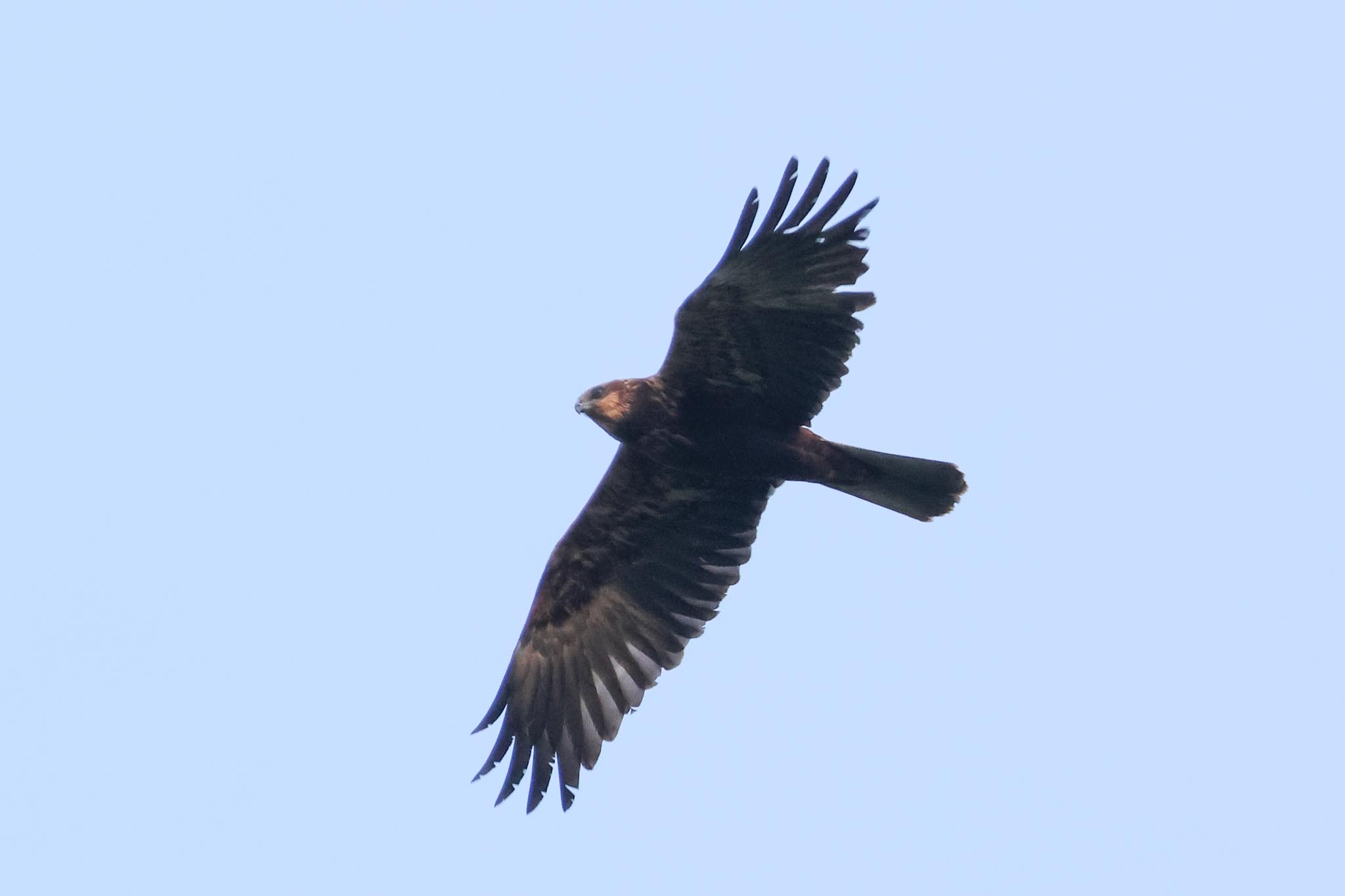
We stopped nearby and walked up to the gate at the top of the bank to scan the marshes from here. Several Marsh Harriers were perched out on the bushes and drifted inland overhead one by one, giving us the chance to study some of the variation in colouration of the males. A pair of Red Kites drifted past too. There were several Little Egrets and a Grey Heron out on the flooded grass one side and a large flock of Curlew feeding the other side. Four Common Snipe were very well camouflaged in a patch of cut reeds. As a reminder that spring is on its way now, a Song Thrush was singing in the trees, a Dunnock in the bushes behind us and a Reed Bunting in the reeds. A Cetti’s Warbler shouted at us from time to time too.
We hadn’t waited too long when we spotted a Barn Owl flying in over one of the fields behind us. It cut across over the reeds and over the flooded grass, where it turned sharply and dropped down. It was a bit half-hearted and it hadn’t caught anything. We just had time to get it in the scope before it was off again. It flew over the road and across the next field, quite determinedly, before disappearing into the trees. It was heading in to roost for the day.
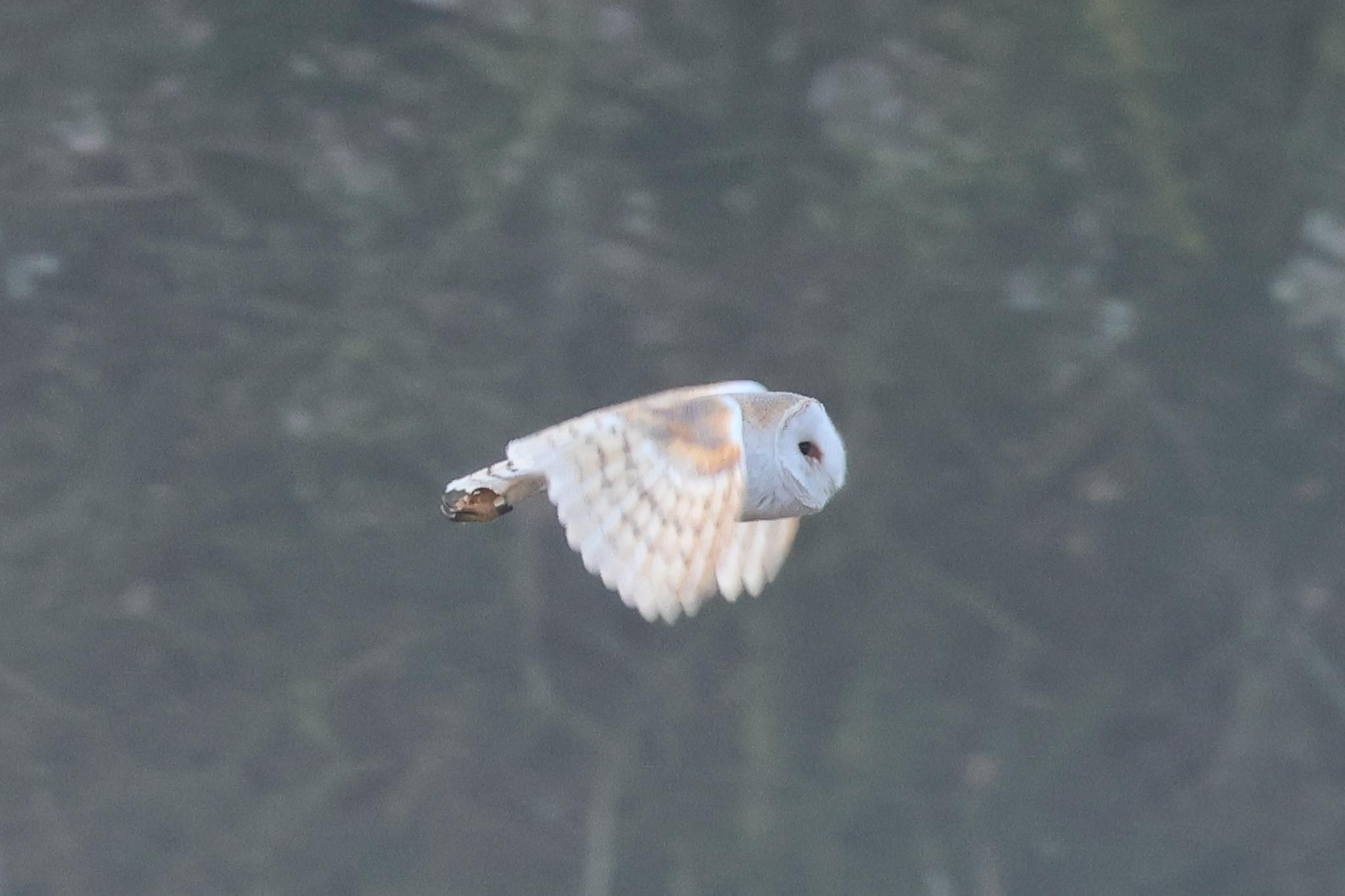
We stood and scanned a little longer but there was no sign of any more owls still out hunting, so we decided to move on. We stopped again at the start of a footpath, where we met another couple of locals coming to look for the Tawny Owl too, so we walked up together. Earlier in January, the Tawny Owl was very easily disturbed and disappeared into its hole as soon as anyone appeared on the footpath, so when we saw that it was perched at the entrance to its hole, we stopped straight away and got it in the scope. It was obscured by branches and we were looking into the sun so it was not a great view. We moved up again in a couple of stages and we needn’t have worried today as it allowed us to walk right up to the corner where we had a clear view of it head on in the scope.
The Tawny Owl was mostly dozing at the entrance to its hole and barely opened its eyes, until a woman walking a dog appeared on the path. The dog was trying to drag a huge tree bough behind it and making quite a racket. The Owl looked over and quickly realised it was nothing to worry about so went back to sleep again.
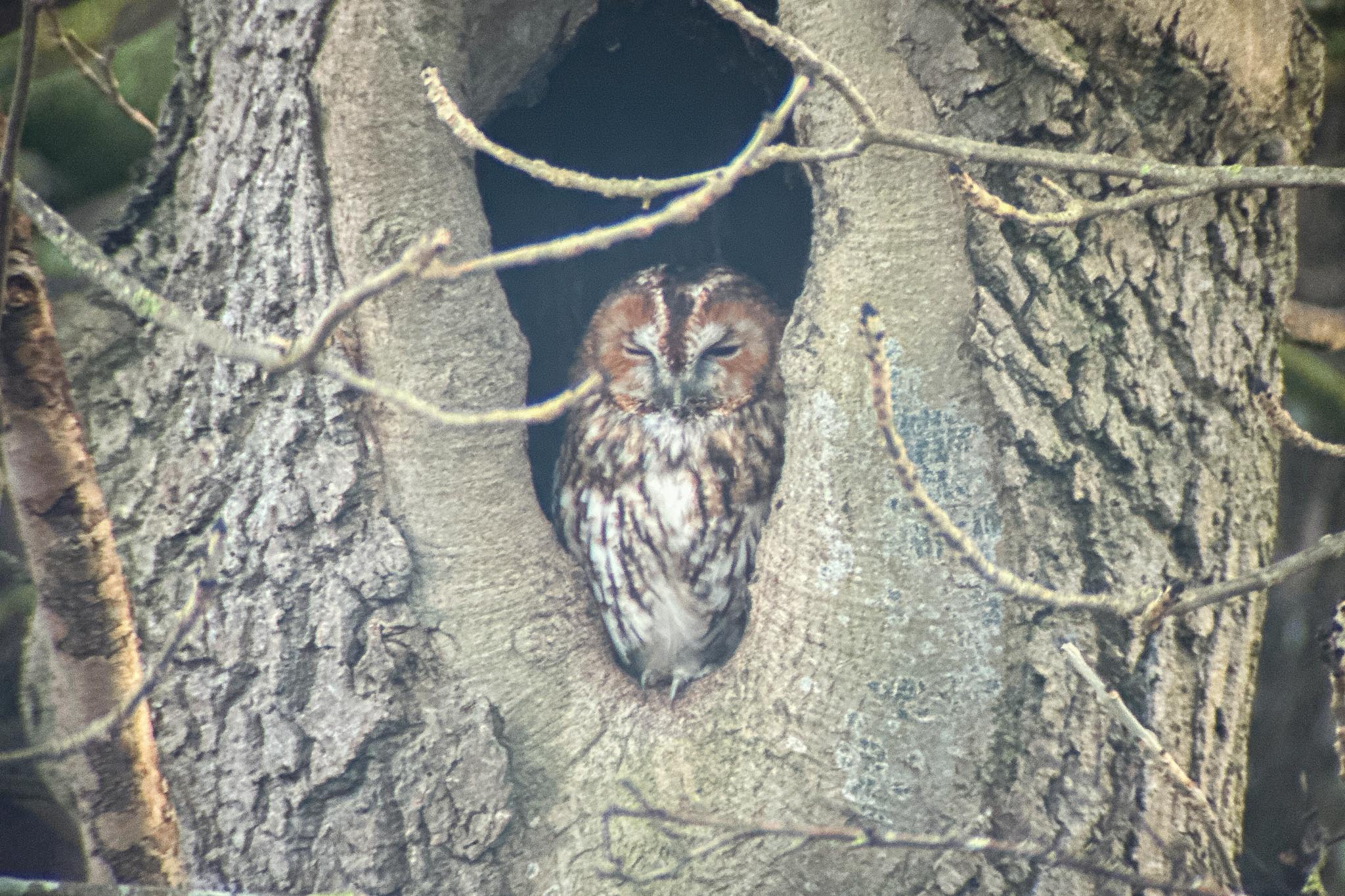
The long-staying Red-breasted Goose had been reported again at Cley this morning, so being close by we decided to have a quick look. There was always a chance of a Barn Owl here too. The Goose had been seen flying in to North Scrape with some Brent Geese but we had hoped they would be out feeding on the fields by the Beach Road again. When we got to the beach car park, there was no sign of any Brents and nobody seemed to be quite sure where the Goose had gone. It was not our main priority this morning, so we decided not to waste too much time looking for it. As we drove back along Beach Road, some other local birders on the West Bank drew our attention to some Twite feeding in the corner of the Eye Field. We got out of the minibus just in time to see them fly up, over our heads and drop out onto the saltmarsh north of the Glaven channel.
There was no sign of any Brent Geese feeding on the marshes towards Salthouse either, but we looked up to see a flurry of feathers as a Peregrine caught something over the road ahead of us. It was mobbed by a smaller falcon, a Merlin, as it flew out and landed on the grass. It was a juvenile, but a particularly striking pale one, possibly a bird of Arctic origin (maybe even of the northern race calidus).
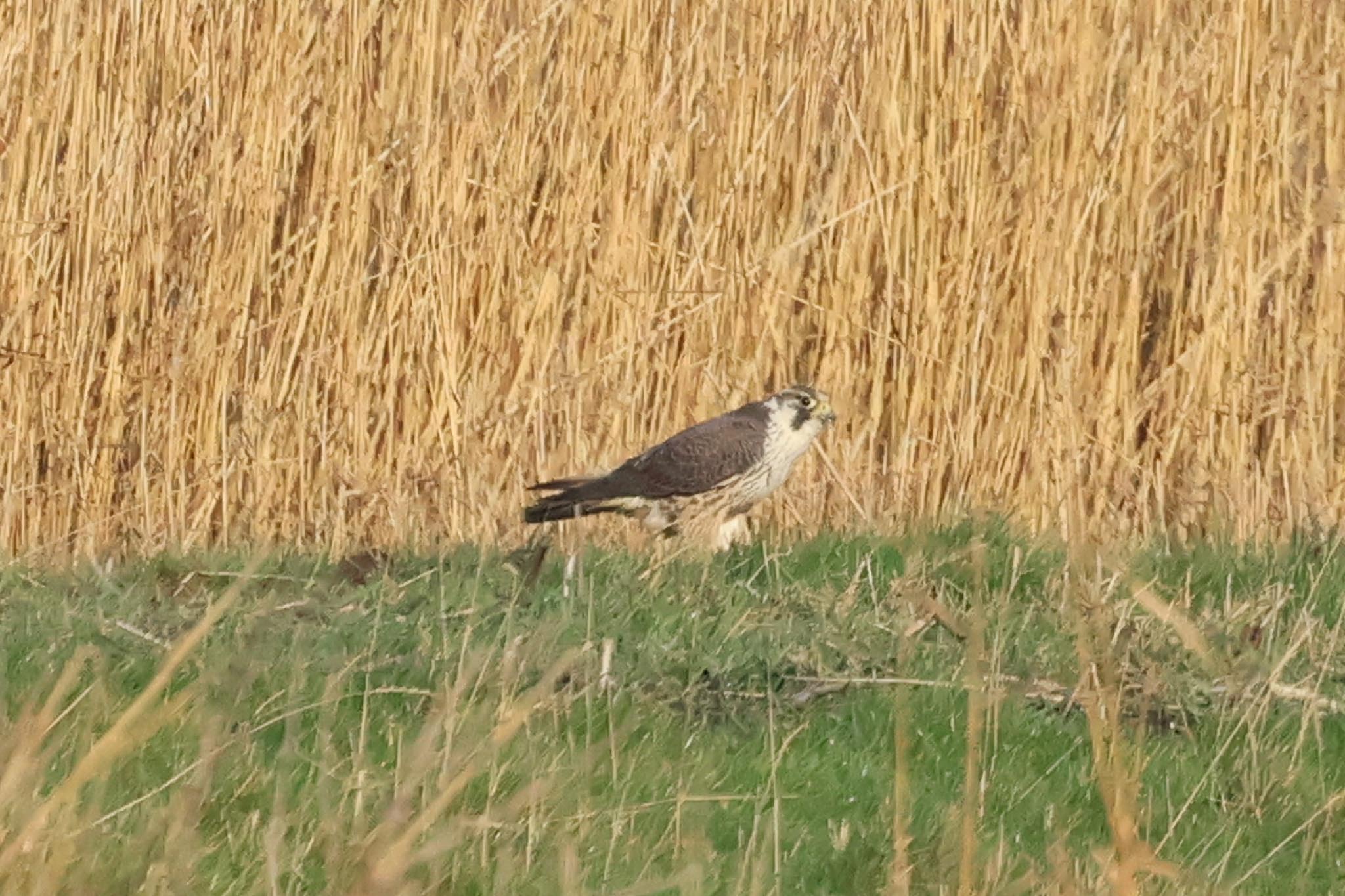
Moving on, we headed inland to resume our owl search. The Little Owl population here seems to be dropping fast, and they are becoming increasingly hard to find in any of their regular spots. Many of the barns they live in are getting converted to second homes or holiday lets and breeding sites are becoming increasingly isolated and fragmented. We tried a few barns which haven’t yet been converted and we know there are still Little Owls present, but they weren’t playing ball today, despite the sunshine. Some of the remaining sites are more actively used farm buildings and they are more prone to disturbance during the day. We could have another look on our way back this afternoon. We did pick up some farmland birds, several Stock Doves and a nice flock of about twenty Skylarks, plus several Brown Hares in the fields.
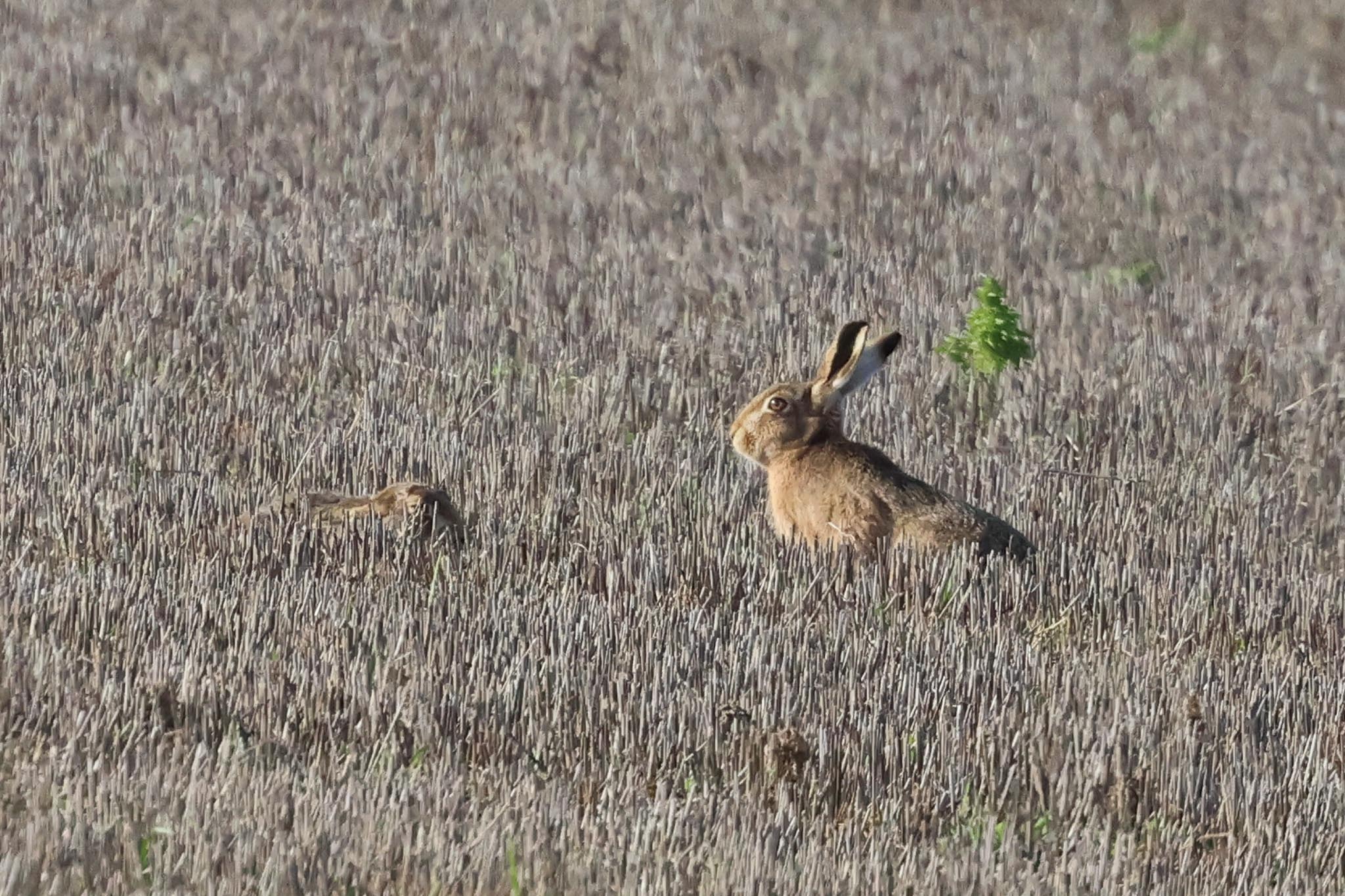
We cut back down to the coast and headed for Titchwell. We had an hour or so before lunch, so we walked round on Fen Trail. A Chiffchaff was flitting around in the trees behind the visitor centre and a scan of the ground under the sallows as we walked along produced two different Woodcock. They were still feeding actively today and when we tried to get the scope on them they walked away into the vegetation.
A little further on, there were already a couple of people already admiring the Tawny Owl we had come to see. It is roosting in ivy, a more typical area for one to roost, and fairly obscured from most angles, but we got it in the scope where you could see most of it. At one point, when a large RSPB group from London arrived, it turned round to look at the swelling crowd. We moved on.
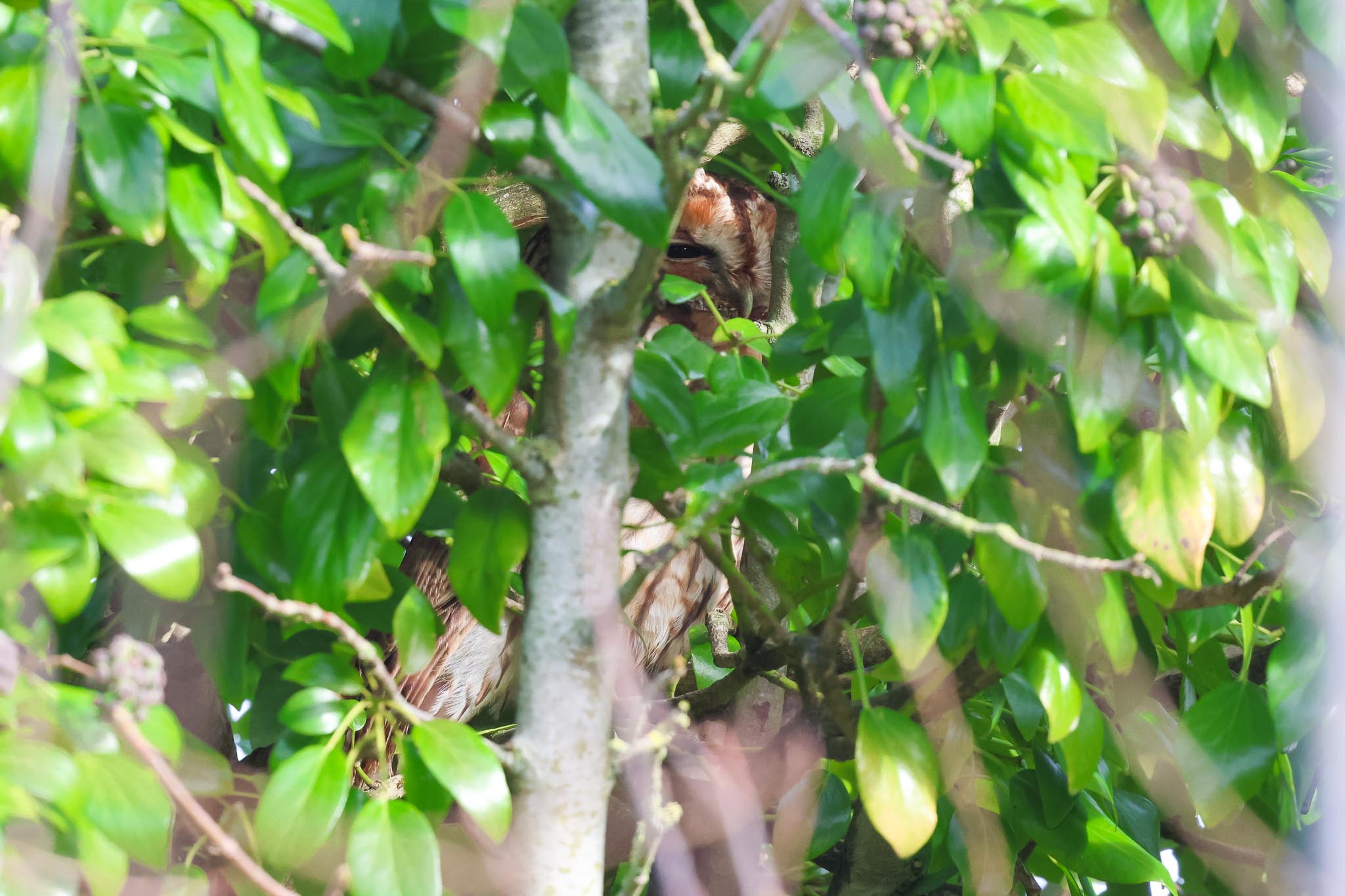
We had a quick look at Patsy’s Reedbed. There were three Common Snipe hiding out on the cut reeds and a nice selection of ducks on the water, including some smart Gadwall, Tufted Duck and two drake Common Pochard. A Marsh Harrier was perched in the dead trees beyond. It was time for lunch now, so as the big RSPB group caught up with us again, we decided to head back to the picnic area to get something to eat.

After a break, we still had a bit of time before the owls were likely to start emerging again. We headed out for a quick look at the Freshmarsh. On the way, we stopped to look at the Water Rail which was showing very well in the ditch next to the path. We stopped to scan just before Island Hide and heard Bearded Tits calling quietly in the reeds. A female climbed up the reed stems into view a couple of times before flying across and dropping back in. A small flock of Pink-footed Geese flew over calling and appeared to head out to sea to the north-west, perhaps leaving us already to head back north.

There were lots of Brent Geese out on the water and several pairs of Pintail feeding, upending and the drakes showing off their pin tails . A couple of Avocets were on the corner of one of the islands and more were up to their bellies in the deep water. From a little further up, we stopped to admire the Golden Plovers gathered on the islands and the bund, where they were remarkably well camouflaged until they were spooked by two Red Kites drifting over and whirled round with the Lapwings calling. A rather bright yellowish Meadow Pipit was feeding on the bund and a flock of Linnets dropped in.
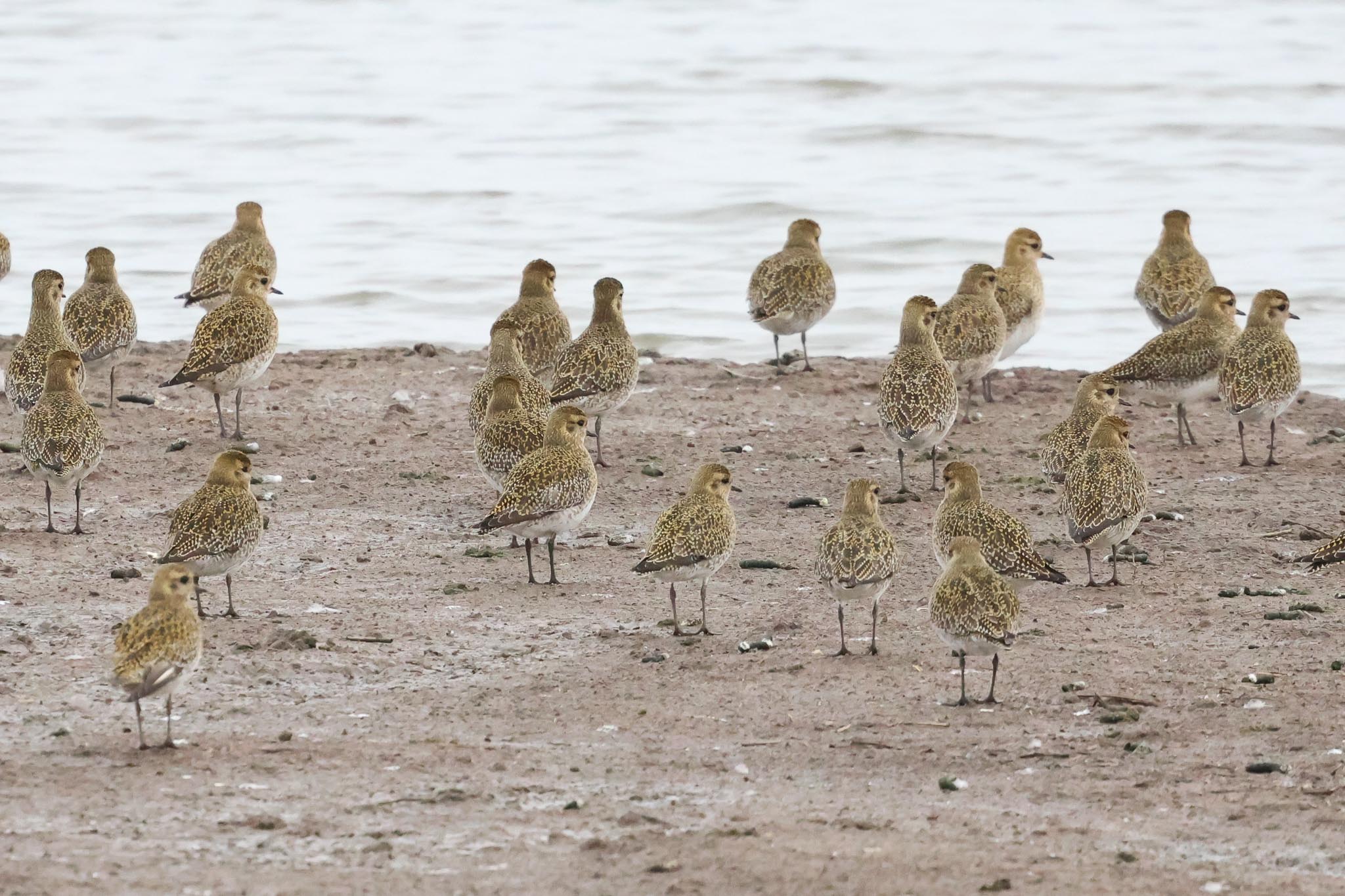
A small number of Black-headed Gulls were bathing out in the middle, and we could see that one or two were already starting to get their summer chocolate brown (not black!) heads. Their white wing tips and heavier, brighter red bills gave away a couple of Mediterranean Gulls in with them too. A large flock of Brent Geese came up from the saltmarsh behind us and came in low over our heads chattering before dropping down to the water in front of us – quite a sight. We didn’t have time to walk out to the beach today as we had to resume our search for owls, so made our way back to the minibus. As we got back to the trees, a series of skeins of Pink-footed Geese flew overhead, possibly heading to the grazing marshes at Thornham – one of the sights and sounds of a Norfolk winter, so always a pleasure to see.
On our way back east, we noticed a group of egrets on the meadows north of the road at Burnham Norton – a quick scan from the minibus confirmed they were Cattle Egrets. We cut inland at Wells on the main road and hadn’t gone far when a small harrier came appeared over the hedge alongside us briefly. It wasn’t easy to turn round, and when we got back we couldn’t see it, but after we turned round again and headed back south it flew over the road in front of us – a juvenile male Hen Harrier. We could see its white rump patch as it disappeared off over the field away from us.
We tried a couple of sites for Little Owls again, but there was still no sign of any, so we cut back round and down to the coast. We stopped at the pools east of Wells for a quick scan of the fields, but there was no sign of any Barn Owls out here yet either. A message that one was out where we had seen it earlier this morning saw us head straight back there, but it had clouded over and didn’t feel very owly when we arrived. There was no further sign of the Barn Owl now. A Great White Egret flew over. It felt like, after our good start this morning, our owl search this afternoon was not going to yield any more fruit.
We had a drive round looking for any other Barn Owls out feeding around the grazing marshes, but it was all rather quiet this afternoon. If they aren’t hungry, Barn Owls do not need to come out to feed in the daytime and there are fewer birds around this winter after a poor breeding season in 2023 too. It was getting misty on the coast, but a quick look down along the Beach Road at Cley and we could see a flock of Brent Geese out on the far side of the Eye Field. As we turned round in the car park, we thought it might be worth a quick look through the scope but as we were getting out of the minibus, something spooked them and they took off, flying over our heads and disappearing off west towards Blakeney Harbour.
We had one last place to try for a last Barn Owl, so we drove inland again. We stopped by a gate overlooking the water meadows and scanned, but there was no sign of any activity here either. A Raven kronked from somewhere over the woods behind us. We decided to walk down the footpath to see if there was any sign around the owl box further down and as we set off, a Tawny Owl gave its first hoot from the trees. When we got to the point from which we could see the owl box, we looked across the field and there was the Barn Owl perched in the tree next to it, preening. We got the scope on it.
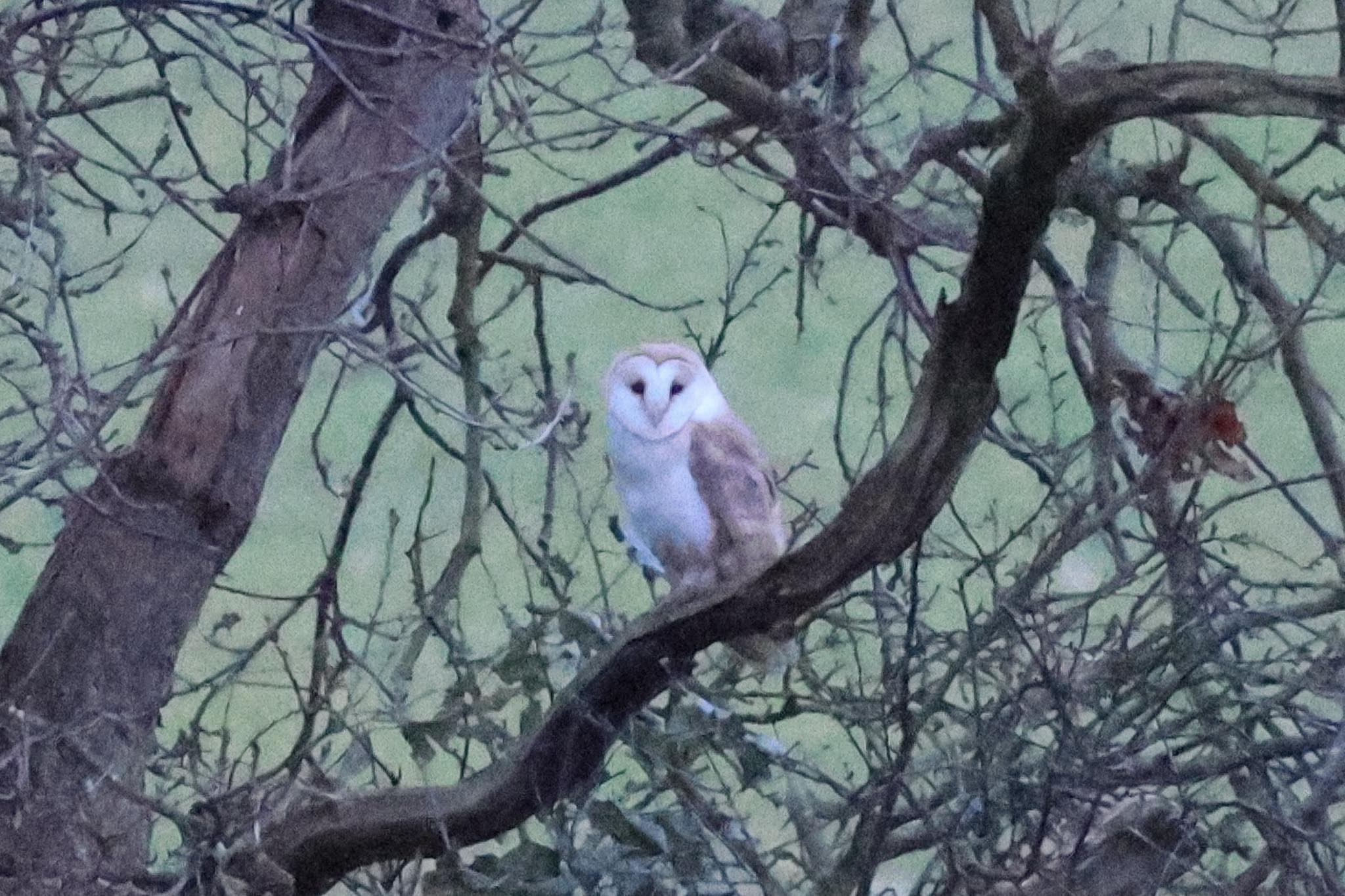
The Barn Owl took off and started hunting over the meadow in front of us. It disappeared behind a hedge, so we walked on a little further, just in time to see it fly back out and round and drop down into the grass. Then it came up again and disappeared off down the footpath away from us. There was no sign of it over the field the other side of the hedge, so we decided to call it a night and walk back. The Tawny Owls were getting very vocal now, with a succession of hoots coming from the trees. A nice way to end a day of owling. It was just starting to spit with rain as we got back to the minibus – perfect timing!
















